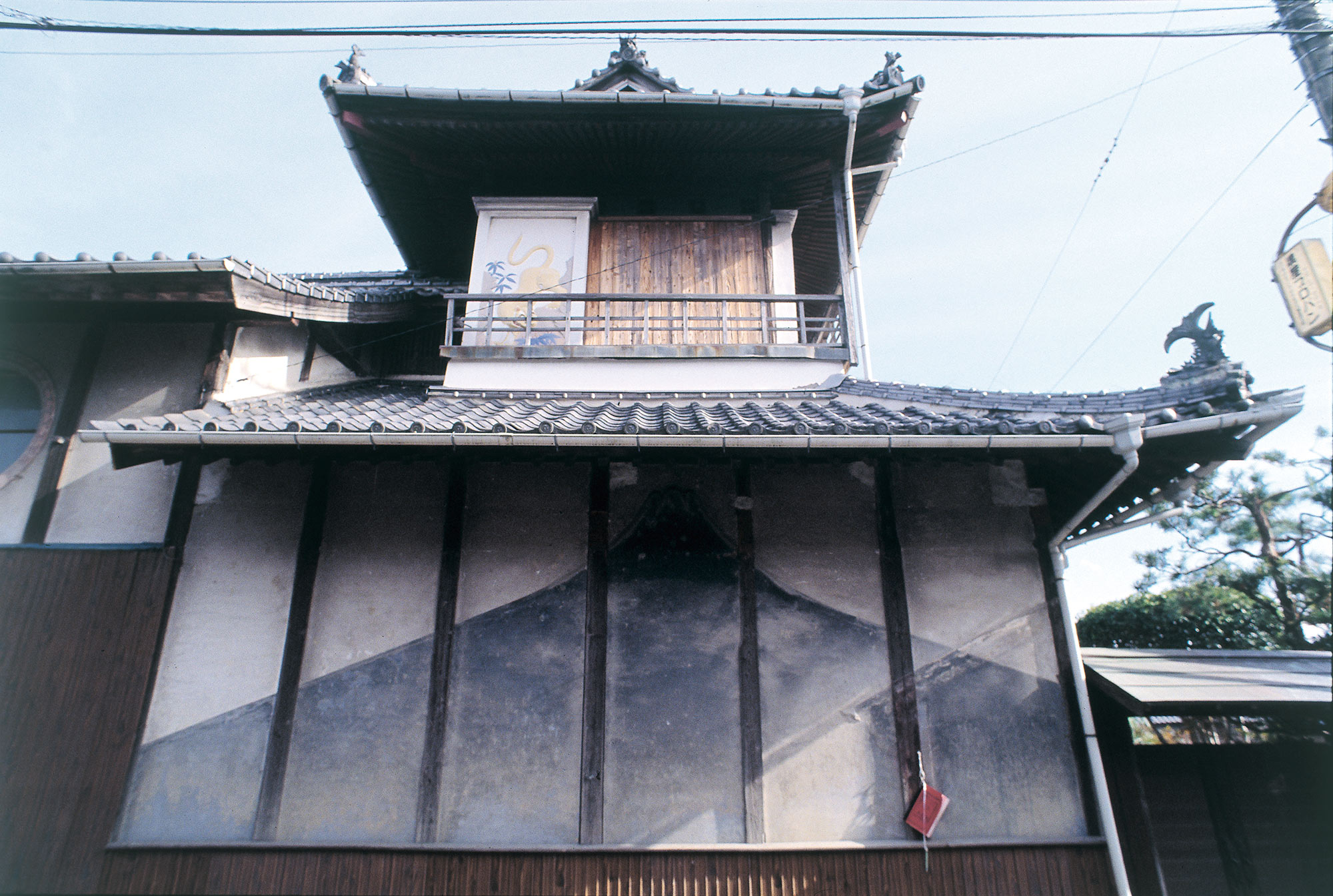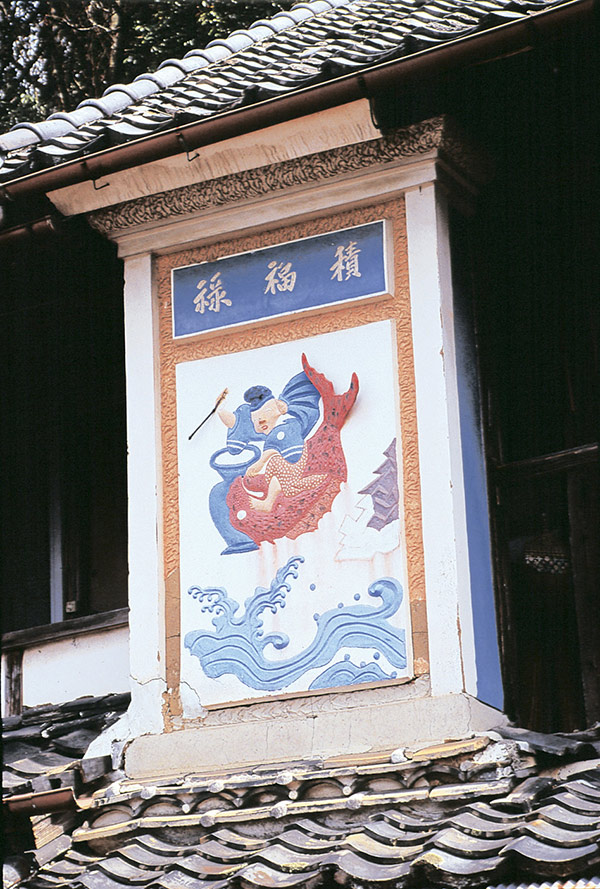

- Kenhoku Area
- Buildings・Former Residence
- Folk Customs
Plaster Reliefs of Ajimu
Photography/ISHIMATSU Takeo
Invoking Joy
In rural Oita, especially when walking along streets of old homes that were once a village, you’ll come across lightly colored, almost pastel pictures drawn on the white walls here and there. These reliefs are carved from plaster facing outside, on shutter boxes and gable walls. These are plaster reliefs (kote-e).
While these exist all over Japan, Oita is home to a particularly high number of these plaster reliefs, with roughly 700 reliefs throughout the prefecture in Yabakei, Nakatsu; Yamagamachi, Kitsuki; Hiji; and above all, the town of Ajimu, Usa, where you can see these reliefs in 50 different locations.
There are many kinds of plaster reliefs. Obviously these are all of auspicious things, such as family crests, Ebisu, Daikoku, the God of Contentment, Urashima Tarou, carp swimming up a waterfall, the three wise monkeys, crane and tortoise, dragon and tiger, lions, as well as hatsuyume (first dream) featuring Mount Fuji, a hawk, and an eggplant, or pine, bamboo, and plum. These invoke happiness and prevent evil from entering. That is, they are designed to bring good luck in and keep demons out.
Most of these were made in the Meiji Period, but some are from the Taisho Period. There are also some made in the Heisei Period featuring specialties of Ajimu, such as wine and snapping turtles. There are more than ten known artists of these reliefs.
In 1996, Oita Plaster Relief Custom was chosen as a National Intangible Folk Cultural Property.
Why are there this many plaster reliefs here? While part of this is of course due to the presence of master plasterers, it is also because Ajimu had a prosperous sericulture industry, and since the rural economy was so good, many people built homes or storehouses with white walls.
Perhaps plaster reliefs cannot be called works of art. But the technique is incredible. It might be easy if it were just painting over an already-made mold, but they start by mixing the mineral paint into the plaster. This is why the color doesn’t fade, even when exposed to wind and rain. One can feel the spirit of the craftsman here. How will this be passed on to future generations? There are still many issues.

Kuniaki Shirasa’s residence, relief of Ebisu, created in 1910 by Hontarou Sato. *Currently moved to Lotus Ito in Oshikida, Ajimu

